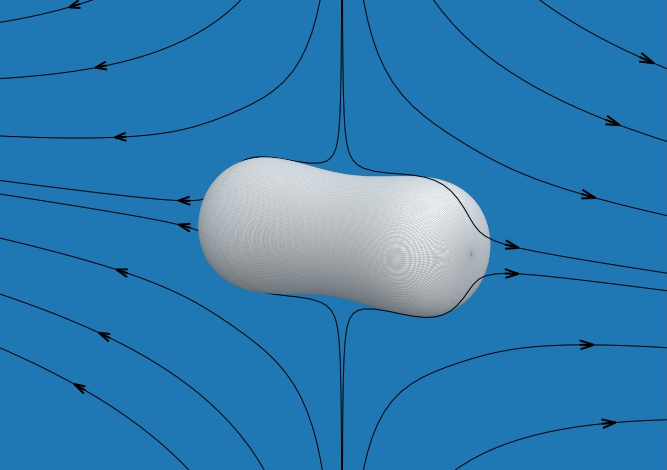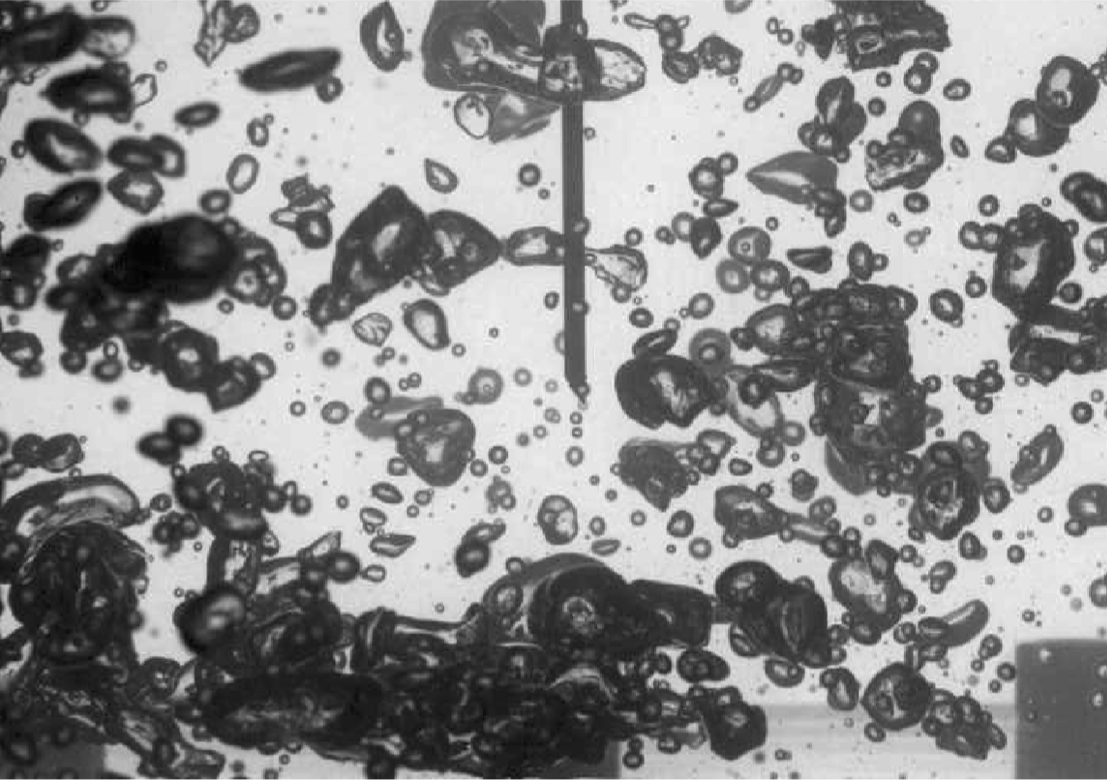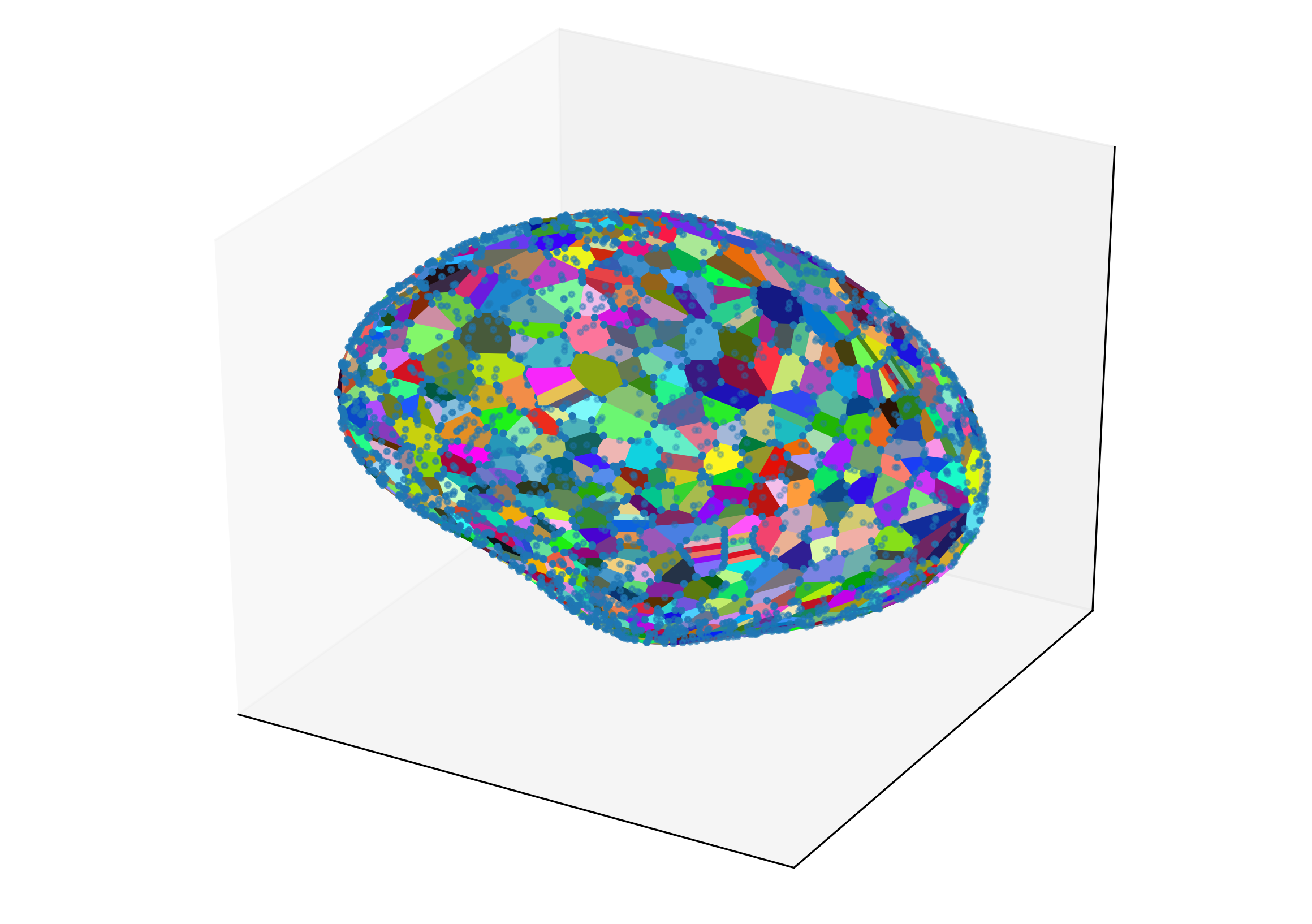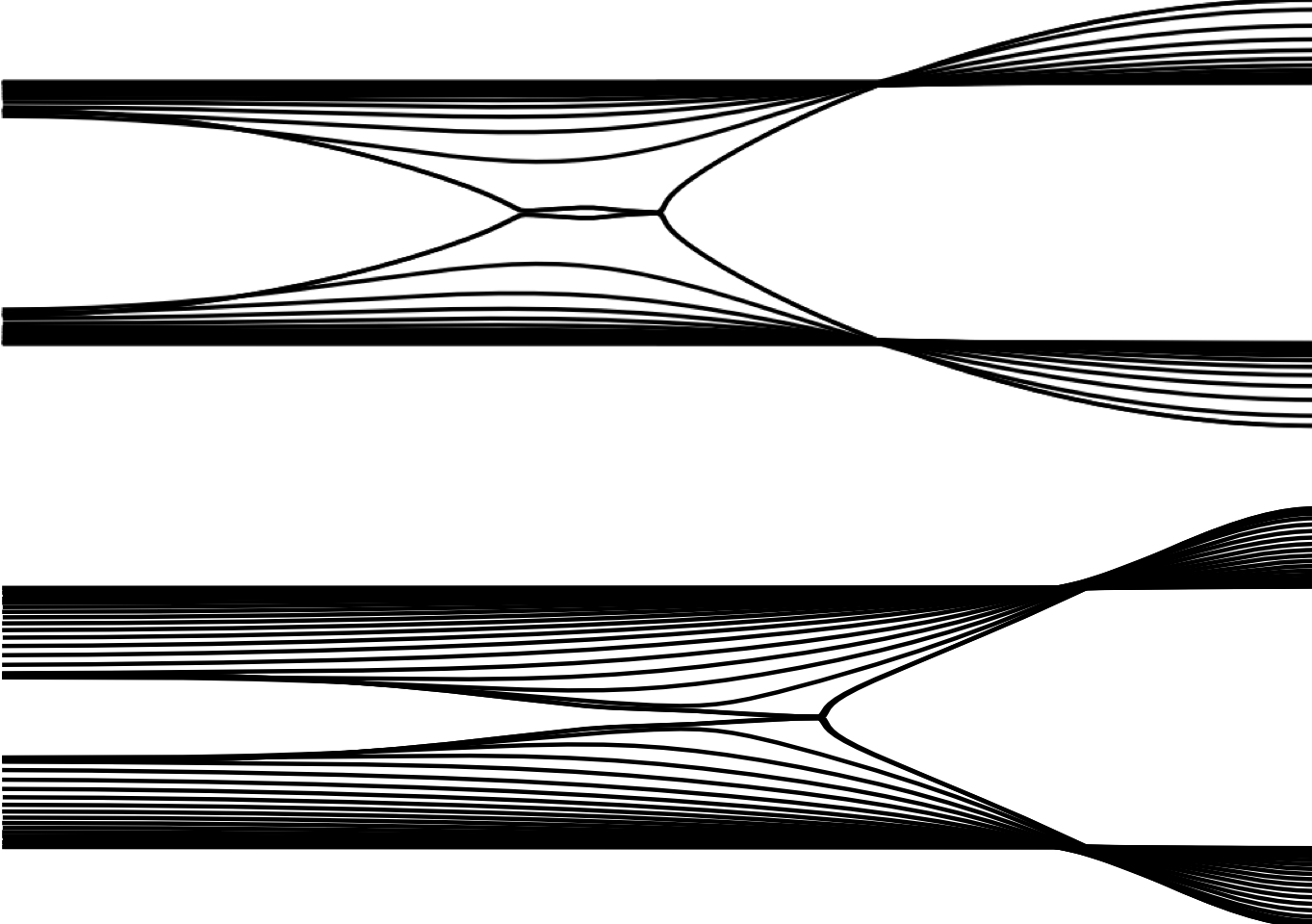Research interests
I have a strong interest in
My PhD research focused on the interactions between a turbulent flow and a bubble, in the context of ocean-atmosphere gas transfers. In this framework, I studied both
In post-doc at EPFL, I investigate both the

Deformations in a model flow
The main flow geometry into which bubbles deform and break in turbulence is an extensional flow. We, then, study bubble deformations and breakage in a uniaxial extensional flow. We show that the full deformation dynamics and breakage can be reproduced by a
 Code Uniaxial
Uniaxial
Code Uniaxial
Uniaxial

Capillary fragmentation in turbulence
Bubbles drive gas transfers at the interface between the atmosphere and the oceans. Small bubbles, smaller than the critical size for bubble stability, are the main contributors. Indeed, they represent the largest surface of exchange. We show that these bubbles are created by the fragmentation of very large bubbles, through
 Turbulent bubble
Capillary breakage
Experiments
Sub-Hinze production
Turbulent bubble
Capillary breakage
Experiments
Sub-Hinze production

Stochastic deformations in turbulence
Turbulent fluctuations randomly deform bubbles. In particular, presssure fluctuations larger than the surface energy of bubbles can induce breakup. For large bubbles, we link short-time deformations as well as
 Turbulent bubble
Short times
Break-up rate
Stochastic deformations
Turbulent bubble
Short times
Break-up rate
Stochastic deformations

Stretched air filaments
Rayleigh-Plateau instability can be modified in several manners. One of them is stretching. We observe that stretching decreases bubble size.
